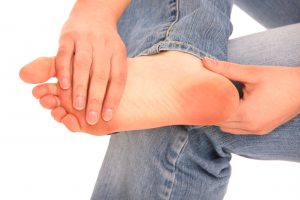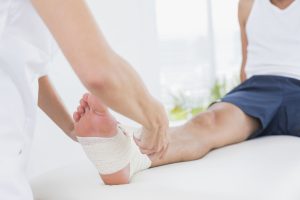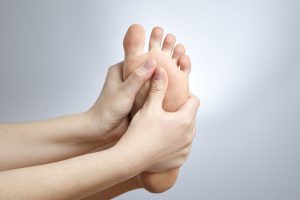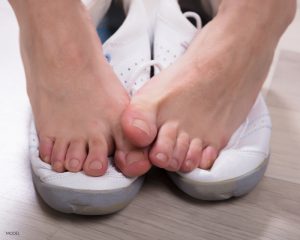Medically Reviewed by Dr. Rachel N. Verville
June 15, 2022

We’re used to certain aches and pains—the occasional headache, nausea, or the common cold. However, when that pain moves into the lower extremities like the calf, ankle, and foot, it’s not always an easy self-diagnosis. Even when you think you narrow the problem down to your Achilles tendon, it’s not always clear what the problem is until you see a podiatrist in Frisco.
If you’re experiencing symptoms of swelling, bruising, stiffness, or have difficulty walking, you may be suffering from one of two common Achilles tendon injuries: tendonitis or a tear. But how can you tell the difference?
What is Achilles Tendonitis?
Tendonitis is a repetitive stress injury marked by inflammation of the tendon. This means it isn’t something that suddenly happens; it occurs over time from repeated stress and pressure on the Achilles tendon.
There are two types of Achilles tendonitis. The first, noninsertional, affects the fibers in the middle portion of the tendon, which begin to break down with tiny tears, swell, and thicken. The second, insertional, affects the lower portion of the Achilles tendon toward the heel. Insertional Achilles tendonitis is also marked by small tears, swelling, and thickening, but bone spurs are also possible.
What is an Achilles Tendon Tear?
While Achilles tendonitis does involve tiny tears that occur over time, an Achilles tendon tear—also known as a rupture—is more sudden and debilitating. If the Achilles is overstretched, it can rupture completely or partially. Usually, when this happens in Frisco, a person will hear a popping or snapping sound, and then feel immediate pain. They’re often knocked off their feet and have difficulty walking properly.
Similarities and Differences
When it comes to Achilles tendonitis and tears, they are very similar in symptoms and causes. With both injuries, there’s usually swelling, tenderness, stiffness, pain, and trouble walking or climbing stairs. They also most commonly affect people (usually men) who run or play sports only occasionally, or those who suddenly increase the intensity of a workout. The Achilles tendon becomes less flexible as we age, so these injuries also tend to affect Frisco residents who are around their 40s.
The differences tend to come in the level of severity of each injury. In general, Achilles tendonitis can be treated at home with pain medication like ibuprofen, stretching exercises, icing, and rest. If you suffer an Achilles tendon tear, the most common form of treatment is surgery because it’s the most effective way to repair the tendon. When you tear your Achilles tendon, you may not even be able to walk at all, while those with tendonitis should be fine to move around (it may just be a little uncomfortable).
Contact a Podiatrist If You Have an Achilles Tendon Injury
If your Achilles tendon is causing you pain or discomfort, don’t try to self-diagnosis and self-treat immediately. Seek the professional opinion of an experienced podiatrist.













